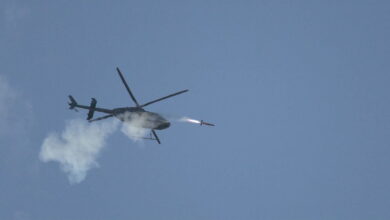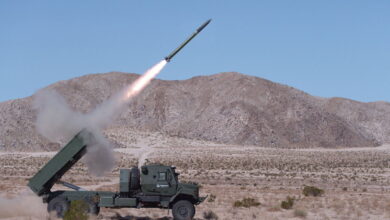Boeing awarded $6.6 billion contract for GMD ballistic missile defense system
$12.6 billion cumulative value contract team includes Orbital ATK, Northrop Grumman and Raytheon
Boeing has been awarded a $6.6 billion modification to a 2012 contract for development and sustainment of the Ground-based Midcourse Defense anti-ballistic missile system, a U.S. Department of Defense release said.
“The Boeing Co., Huntsville, Alabama, was awarded a $6,560,000,000 undefinitized modification … to a previously awarded contract … for the extension of the Ground-based Midcourse Defense (GMD) development and sustainment contract,” the release said.

The modification brings the total cumulative value of the contract including options to more than $12.6 billion ($12,640,952,229).
The work will be performed by an industry team consisting of Boeing, Orbital ATK, Northrop Grumman Systems Corp., and Raytheon Co., the release said.
The scope of work includes “development, fielding, test, systems engineering, integration and configuration management, equipment manufacturing and refurbishment, training, and operations and sustainment for the GMD weapon system and associated support facilities.”
The contract will enhance “missile defeat and defense” and will accelerate “delivery of a new missile field with 20 additional silos and two additional silos in a previously constructed missile field at Fort Greely, Alaska,” the release said.
An additional 20 Ground Based Interceptors – likely built by Orbital – will be procured and deployed.

The contract aims to “expand and improve a state-of-the-art missile defense system to ensure defensive capabilities remain both relevant and current” and will include:
- boost vehicle development
- integration of a redesigned kill vehicle with the boost vehicle
- development, integration, testing and deployment of ground systems software builds to address emerging threats
- expanded ground and flight testing
- cyber security support
Work will be performed at various locations, including Huntsville, Alabama; Fort Greely, Alaska; Vandenberg Air Force Base, California; Schriever Air Force Base, Colorado; Peterson Air Force Base, Colorado; Cheyenne Mountain Air Station, Colorado; Colorado Springs, Colorado; Tucson, Arizona; as well as other government- and contractor-designated locations.
The sole-source Missile Defense Agency-awarded contract period is six years – January 2018, through December 2023.
The current system has many elements built by various contractors. The Exoatmospheric Kill Vehicle (EKV) is Raytheon-made; the Ground-Based Interceptor (GBI) boost vehicle is built by Orbital; the battle management command, control and communications (BMC3) by Northrop Grumman, and ground- and sea-based early-warning radars made by Raytheon.

GMD is one element of the the United States’ layered missile defense systems which also includes Standard Missile 3 which is intended to intercept missiles as they ascend (boost phase); the usually sea-based AEGIS integrated combat system that uses radars powerful computers to track targets and guide weapons; and Patriot and THAAD which are intended to intercept missiles as they descend (terminal phase).
GMD fits in the middle (hence midcourse), and is designed to intercept missiles outside the atmosphere.

A test of the GMD system on May 30, 2017 was declared a success and the MDA published video of the launch and intercept:
However, a January 30 test from an AEGIS Ashore test site of a Standard Missile 3 Block IIA, developed by Raytheon and Japan’s Mitsubushi, apparently failed.
MDA spokesman Mark Wright said: “The Missile Defense Agency and U.S. Navy sailors manning the Aegis Ashore Missile Defense Test Complex (AAMDTC) conducted a live-fire missile flight test using a Standard-Missile (SM)-3 Block IIA missile launched from the Pacific Missile Range Facility, Kauai, Hawaii, Wednesday morning.”
The agency did not comment on whether the test was a failure.
In another test on June 21, 2017, a Standard Missile-3 launched by USS John Paul Jones did not intercept its target. The MDA later said that a sailor mistakenly designated the target as friendly, causing the SM-3 to self-destruct, as designed. Earlier, on February 3, the MDA said the USS John Paul Jones destroyed a medium-range ballistic missile using an SM-3 in a test in cooperation with Japan’s ministry of defense.
Raytheon awarded $2.3 billion Patriot missile system support contract












